As someone who has been enamored by the digital world since its early days, I often find myself reminiscing about the simple, naive days of the internet. There was an age when the words “privacy” and “internet” were rarely spoken in the same breath. Fast forward to today, these two words are at the forefront of many discussions about online rights. Enter the “Privacy Sandbox” in Chrome, an initiative by Google to reshape the way our privacy is handled online, especially when it comes to advertising.
A dive into Privacy Sandbox
The Privacy Sandbox is an initiative by Google to ensure users’ privacy while also providing advertisers and businesses with the tools they need for targeted advertising. In simpler words, it’s like an attempt to have the best of both worlds. On one hand, we get a more private browsing experience; on the other, the online businesses that rely on advertising revenue to keep their content free can continue to function.
This concept took flight because of the increasing concerns about cookies and other trackers that relentlessly follow our online journey. Traditional cookies can often feel like someone constantly peeking over your shoulder, noting every move, every click. With the Privacy Sandbox, Google aims to limit this “over-the-shoulder” feeling while still letting advertisers do their thing.
The balancing act
At the heart of the Privacy Sandbox is the desire to eliminate third-party cookies. These are the cookies set by websites other than the one you’re currently visiting. They are, in many ways, the culprits behind the invasive ads that seem to eerily know what you’ve been up to online.
Now, here’s where I must be honest. I adore personalized content to some extent. It’s like walking into my favorite bookstore where the owner knows my taste and directs me to a new release they believe I would love. It feels personal and curated. However, when this curation turns into relentless ads about a shoe I looked at once, the charm fades. This overbearing advertising feels intrusive and, honestly, a little creepy.
How does Privacy Sandbox work?
Think of Privacy Sandbox as a set of rules, APIs, and standards that websites and advertisers can use. It gives them a framework to collect certain user information but in a more aggregated and anonymized manner. Instead of knowing specific details about you, advertisers would get a broader sense of groups of users and their interests.
- Federated Learning of Cohorts (FLoC): A prominent feature in Privacy Sandbox, FLoC categorizes users into cohorts based on their browsing behavior. This way, advertisers can target cohorts or groups rather than individual users. For someone like me who values privacy, this feels like a win, because it’s like being in a large crowd where no one really knows who you are.
- Trust Token APIs: This is a solution to distinguish between bots and real users without compromising user privacy. It helps websites and advertisers ensure that they’re addressing real, genuine users.
- Aggregated Reporting: This is about receiving data without knowing specifics. Advertisers can understand how their campaigns are performing without knowing which individual users are engaging with their content.
How it stands out
What makes the Privacy Sandbox stand out is its commitment to protecting user privacy without compromising the viability of the web ecosystem. It proposes a series of new web technologies that would allow advertisers to target ads without tracking users across the web. I find this approach to be a breath of fresh air, as it addresses the growing concerns about online privacy while still maintaining the functionality of the web.
Privacy Sandbox vs. Ad Privacy setting
As we navigate through the various features of the Privacy Sandbox, it is essential to understand how it differs from Chrome’s existing “Ad Privacy” setting. This will help us appreciate the nuances and the advancements that the Privacy Sandbox brings to the table.
What is Chrome’s “Ad Privacy” Setting?
Before we delve into the differences, let’s first understand what the “Ad Privacy” setting in Chrome is. This setting primarily allows users to control the kind of ads they see while browsing. It enables users to opt-out of personalized ads, thereby limiting the data that advertisers can collect about them. I have often used this feature to avoid seeing ads that are not relevant to my interests.
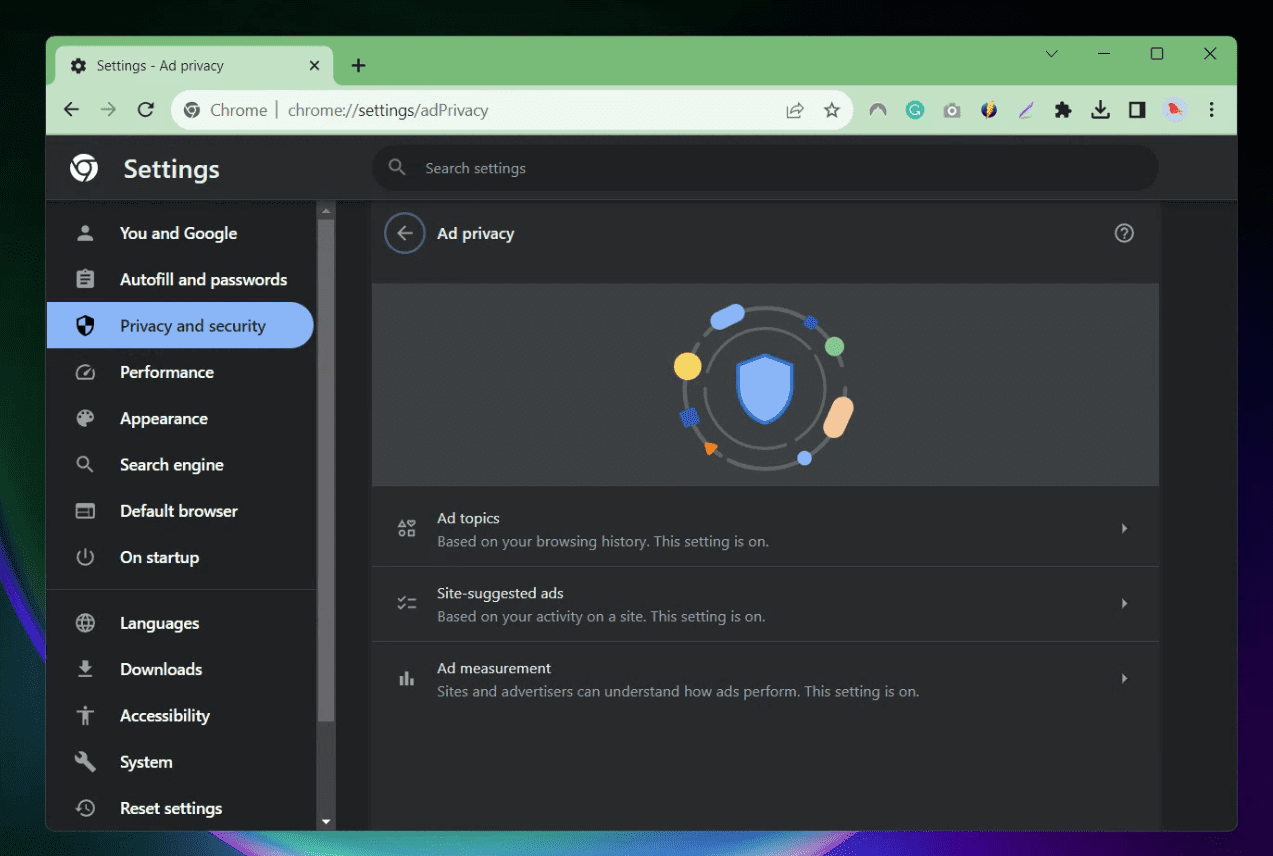
Ad Privacy Setting in Chrome
Key differences
Now, let’s explore the key differences between the Privacy Sandbox and the “Ad Privacy” setting:
| Aspect | Chrome’s “Ad Privacy” Setting | Privacy Sandbox |
|---|---|---|
| Scope of Privacy | Focuses on limiting the personalization of ads. | Goes a step further by replacing third-party cookies and ensuring a more private browsing experience. |
| User Data Protection | Allows users to opt-out of personalized ads, limiting data collection to some extent. | Protects user data more comprehensively by keeping personal information on the device and using aggregated data for ad targeting and measurement. |
| Technological Advancements | A straightforward setting to control ad personalization. | Introduces new web technologies that revolutionize ad targeting and measurement, offering a balanced approach to user privacy and advertiser needs. |
| Ease of Use | A simple setting easily accessed and modified in browser settings. | Offers a comprehensive suite of tools and features for nuanced control over privacy settings, while remaining user-friendly. |
| Status | Available as a part of Chrome’s settings. | Currently under development with various features being tested and implemented gradually. |
| Proposed API | Not applicable as it is a browser setting. | Involves several proposed APIs like FLoC, FLEDGE, Trust Token API, etc., to facilitate the new web technologies. |
| Availability | Available in all versions of Chrome. | Expected to be fully available in Chrome by 2023, with several features already available for testing in the Canary and Dev channels. |
As you can notice from the above table, Ad Privacy and Privacy Sandbox are not the same. In a nutshell, the Ad Privacy setting controls how Chrome handles third-party cookies, which are small files that websites can use to track your browsing activity. The Privacy Sandbox is a set of proposals for new web standards that aim to improve privacy without sacrificing the effectiveness of online advertising.
Enabling the Privacy Sandbox in Google Chrome
Now that we have a fair understanding of what the Privacy Sandbox is, let’s move on to the crucial part – enabling it in Google Chrome. At the moment, this feature is not available for public trials as it is still being developed. However, it is being offered on an experimental basis to a select few users. If you are fortunate enough to see the setting directly in your browser, you may be one of the chosen ones to participate in the experiment. But if you don’t see it, don’t worry – you can still enable it via Chrome flags. We will provide you with all the details, just follow the steps below.
Step 1: Open Google Chrome: Start by opening the Google Chrome browser on your computer. I prefer using Chrome due to its user-friendly interface and a plethora of features that enhance the browsing experience.
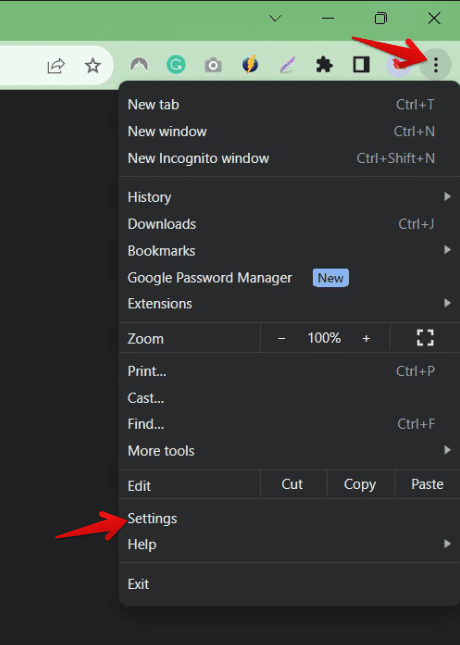
Launching Chrome Settings
Step 2: Navigate to Settings: Click on the three vertical dots located at the top right corner of the browser and select ‘Settings’. This is where you can customize various aspects of the browser to suit your preferences.
Step 3: Access Privacy and Security: Scroll down to the ‘Privacy and security’ section. This section houses various options that allow you to control the level of privacy you desire while browsing.
Step 4: Find the Privacy Sandbox: In the ‘Privacy and security’ section, you will find an option called ‘Privacy Sandbox’. This is where you can enable or disable the feature according to your preference.
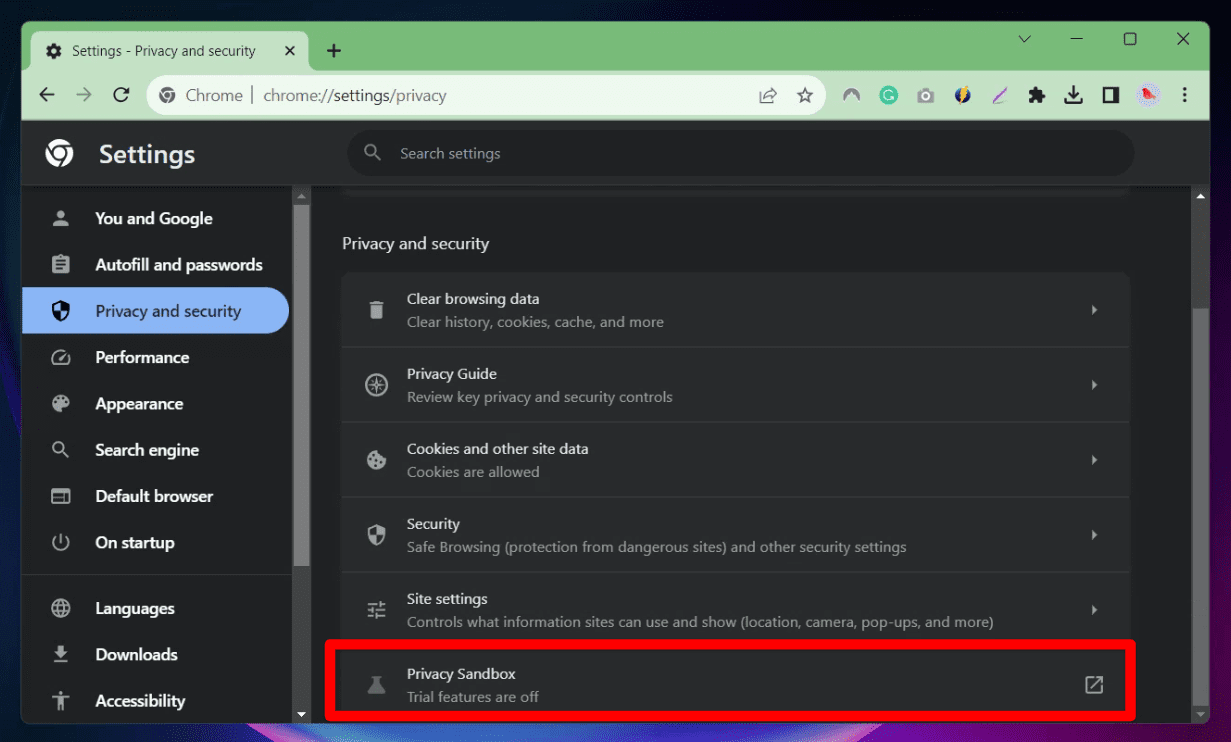
Chrome Privacy and Security settings
Enable the feature: Click on the ‘Privacy Sandbox’ option and toggle the switch to the ‘On’ position to enable it. I found this process to be quite simple and hassle-free.

Enabling Privacy Sandbox on Chrome
If you are unable to locate the “Privacy Sandbox” option, you can access it by going to chrome://flags and enabling the “Privacy Sandbox Ads APIs” setting. Once you have enabled it, restart Chrome and navigate to the Privacy and Security settings. You should now be able to see the “Privacy Sandbox” option, which is turned off by default. Simply switch it on to start using it.
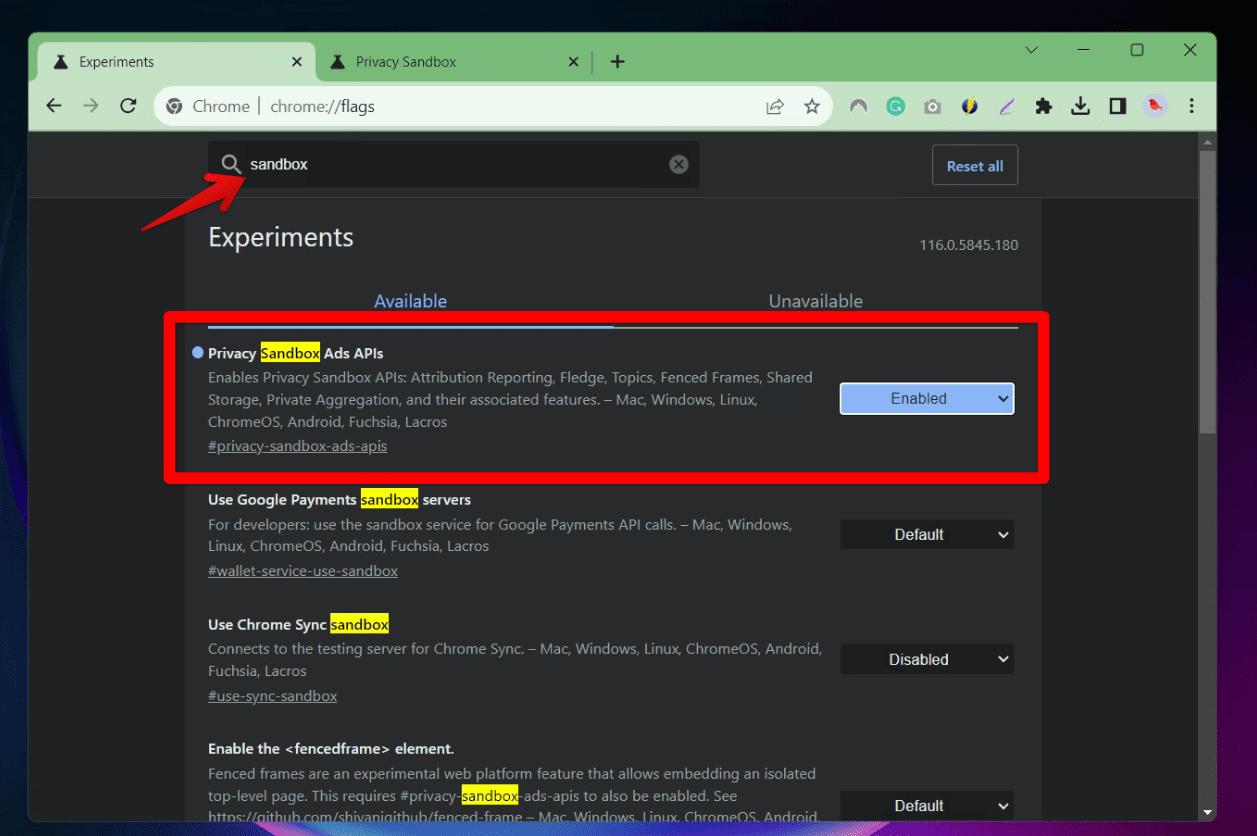
Enabling Privacy Sandbox via Chrome flags
Delving deeper: Key features of Privacy Sandbox
To truly appreciate the Privacy Sandbox, it is essential to understand some of its key features. Here, I will discuss three important aspects: Browser-based ads personalization, Ad measurement, and Spam & fraud reduction.
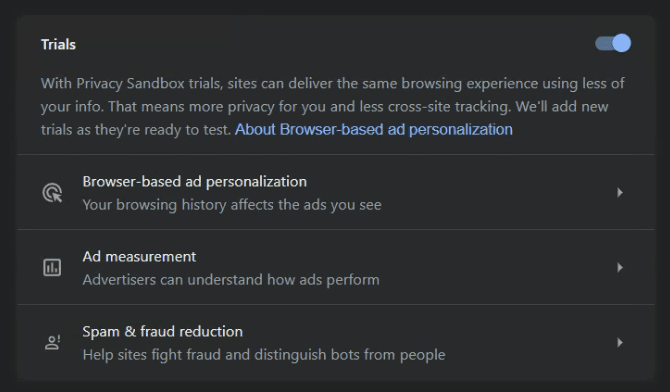
Privacy Sandbox features
Browser-based ads personalization
This feature is something that caught my eye as it promises to revolutionize the way ads are personalized. Instead of relying on third-party cookies, it uses browser-based algorithms to personalize ads. This means that your data remains on your device, ensuring a higher level of privacy. Personally, I appreciate this approach as it allows for personalized ads without compromising my privacy.
Ad measurement
Ad measurement is another critical feature of the Privacy Sandbox. It allows advertisers to measure the effectiveness of their ads without tracking users across the web. This is achieved through aggregated data collection, which ensures that individual user data is not exposed. I find this to be a responsible approach to ad measurement, as it respects user privacy while still providing valuable insights to advertisers.
Spam & fraud reduction
Spam and fraud reduction is a vital aspect of any online platform, and the Privacy Sandbox is no exception. It includes features that help in detecting and preventing fraudulent activities and spam. This not only enhances the security of the platform but also ensures a safer browsing experience for users. I must say, this feature gives me peace of mind knowing that measures are in place to protect users from potential threats.
My personal take on the Privacy Sandbox
Having used the Privacy Sandbox for a while now, I must say that I am quite impressed with its capabilities. It offers a more private browsing experience without sacrificing the personalized ads that many of us have come to appreciate. However, I do feel that there is room for improvement, especially when it comes to educating users about the benefits of this feature.
Pros
- Enhanced privacy: The most significant advantage of the Privacy Sandbox is the enhanced privacy it offers. It protects users from being tracked across the web, which is a significant step towards a safer browsing experience.
- Personalized ads: Despite the increased privacy, the Privacy Sandbox still allows for personalized ads. This means that you can enjoy a customized browsing experience without compromising your privacy.
- User-friendly: I found the Privacy Sandbox to be quite user-friendly. The process of enabling it is straightforward, and it does not require any technical knowledge.
Cons
- Limited awareness: Despite its benefits, a drawback of the Privacy Sandbox is that many users are not aware of its existence. I believe that involving numerous users in the testing process will work wonders for this feature.
- Potential for misuse: Like any other technology, there is a potential for misuse. It is essential to remain vigilant and use the feature responsibly to avoid any potential pitfalls.
Conclusion
The Privacy Sandbox is a promising development in the world of online privacy. It offers a more private browsing experience without sacrificing the benefits of personalized ads. I have personally enjoyed using this feature, and I believe it is a step in the right direction. However, it is essential to remain informed and make an informed decision based on your individual needs and preferences.
I hope this blog has provided you with a comprehensive understanding of the Privacy Sandbox and how to enable it in Google Chrome. I encourage you to explore this feature further and make the most of the enhanced privacy it offers.
